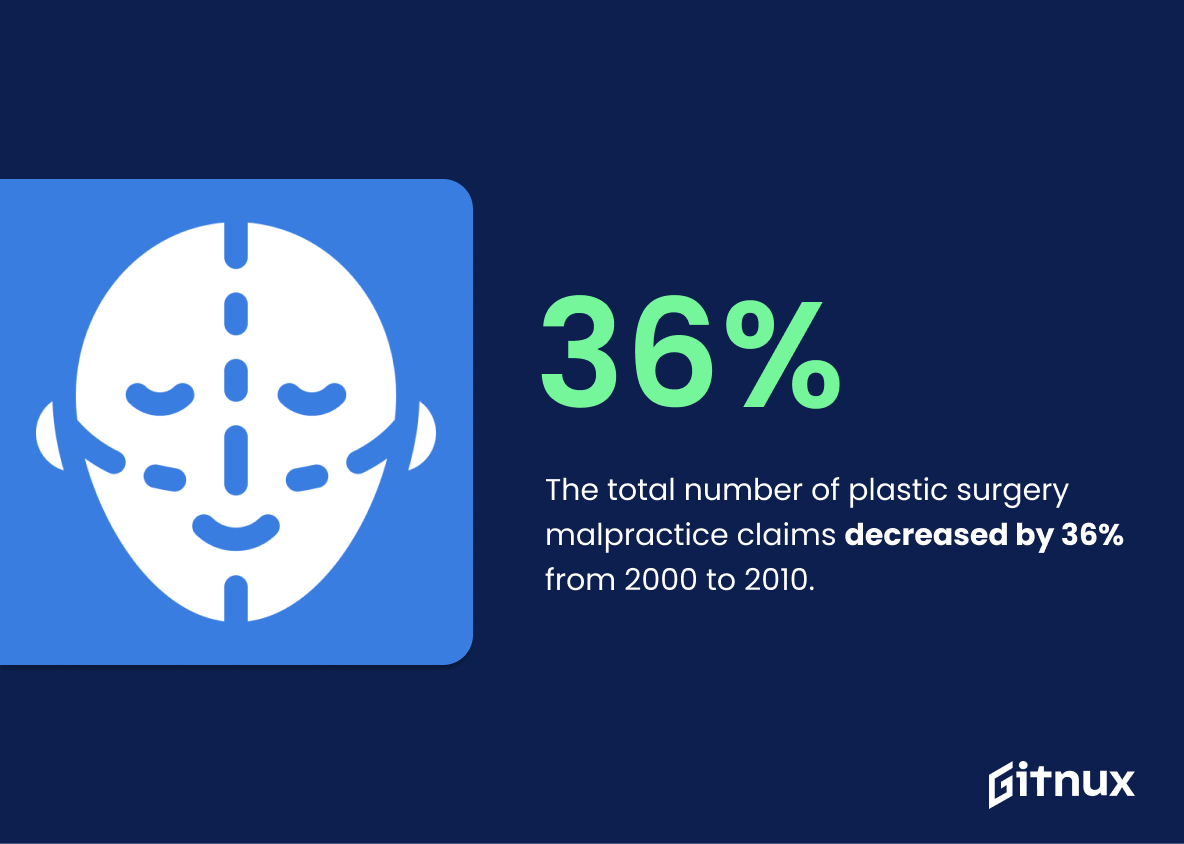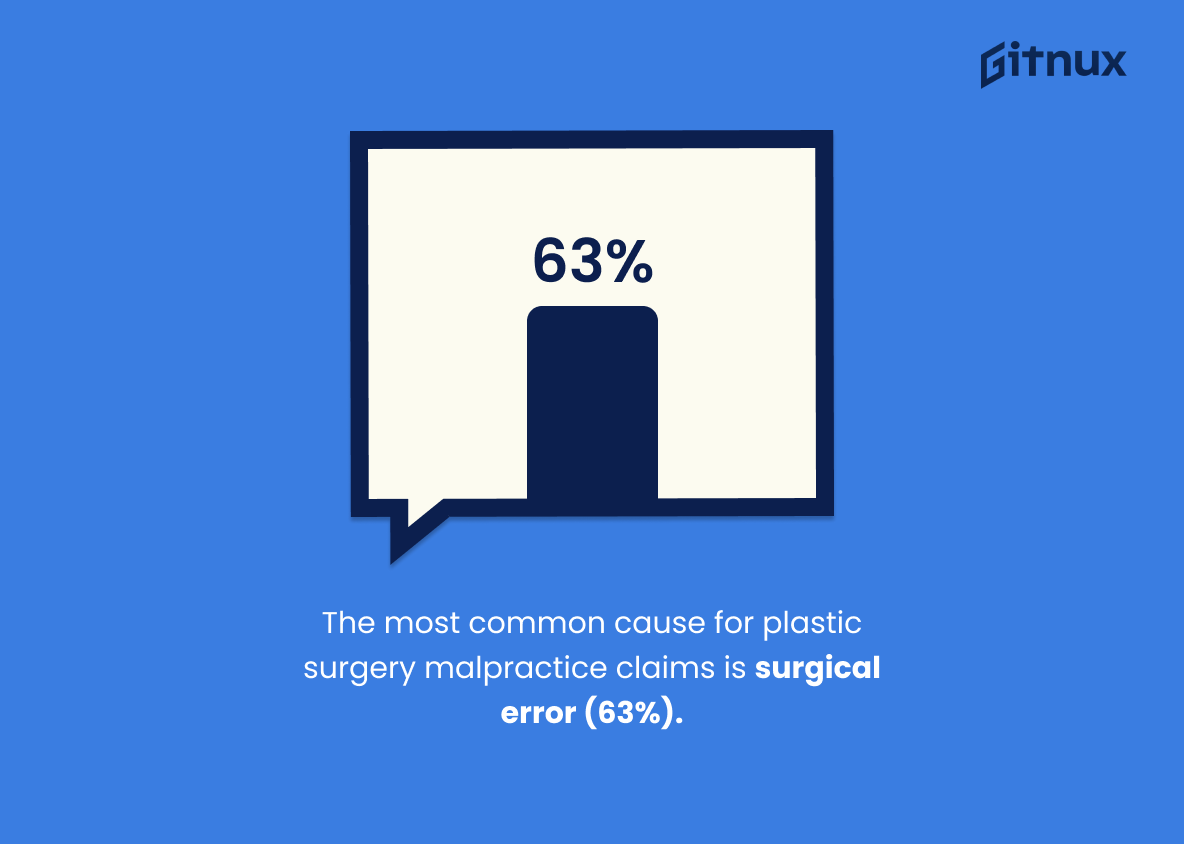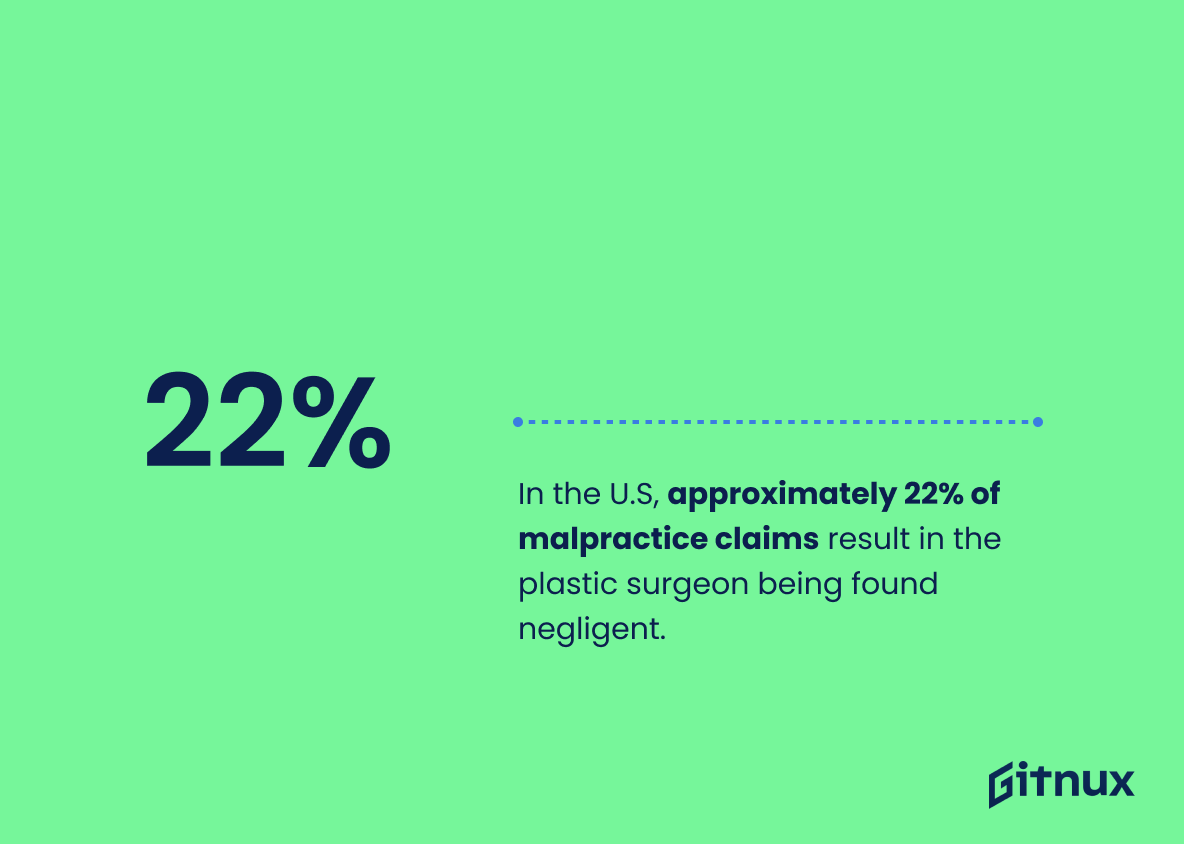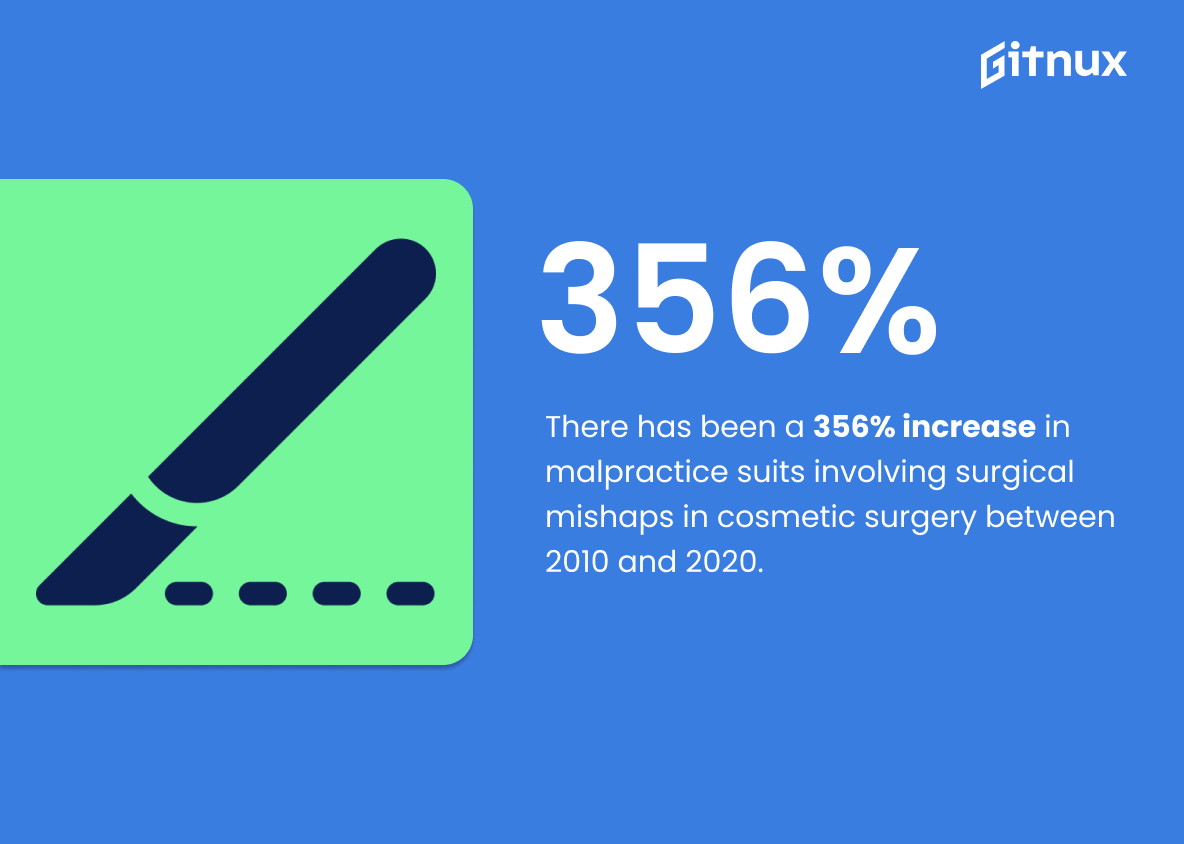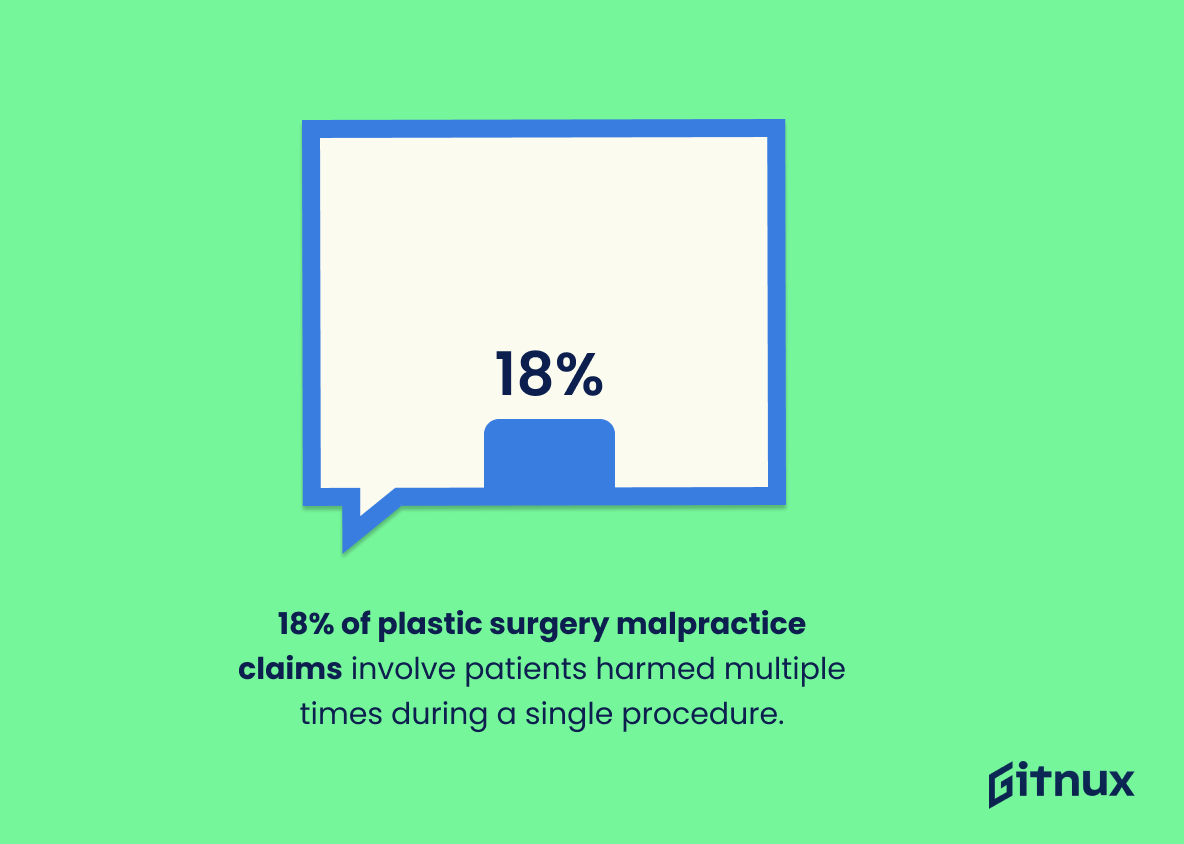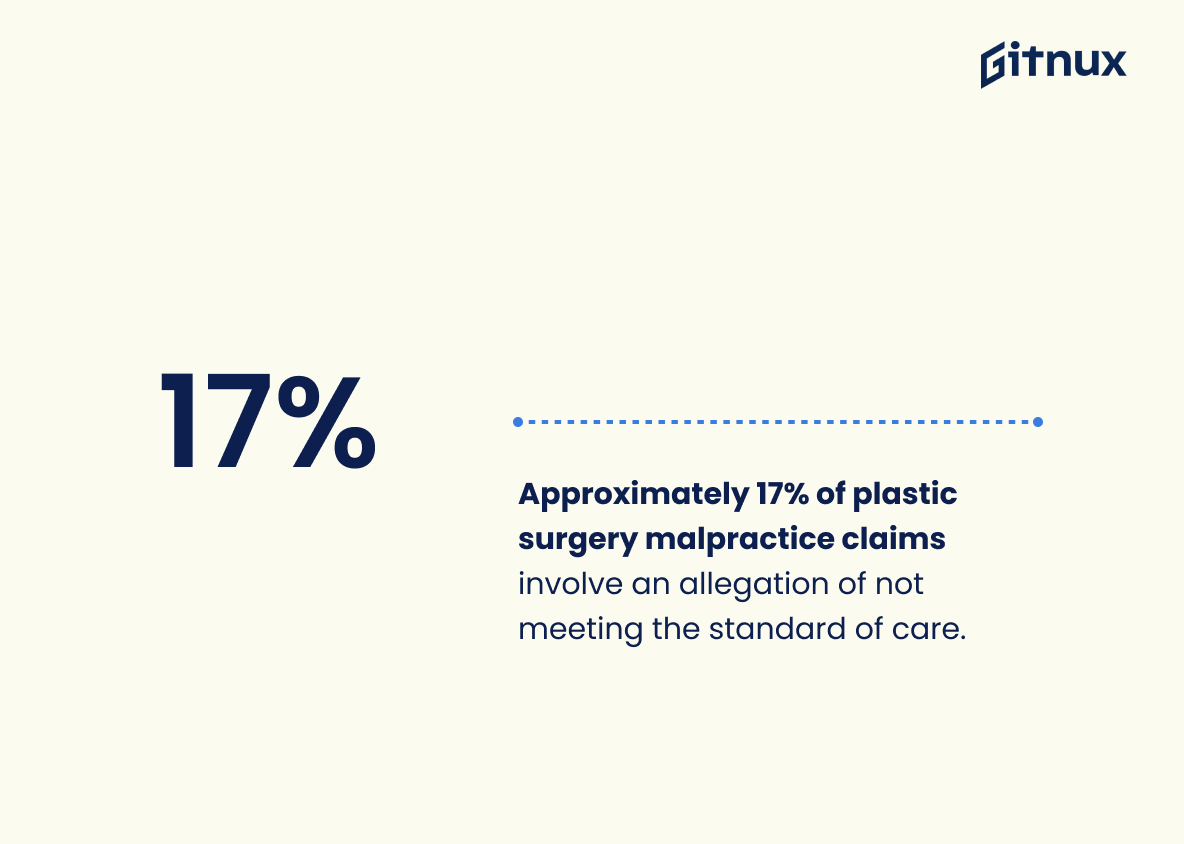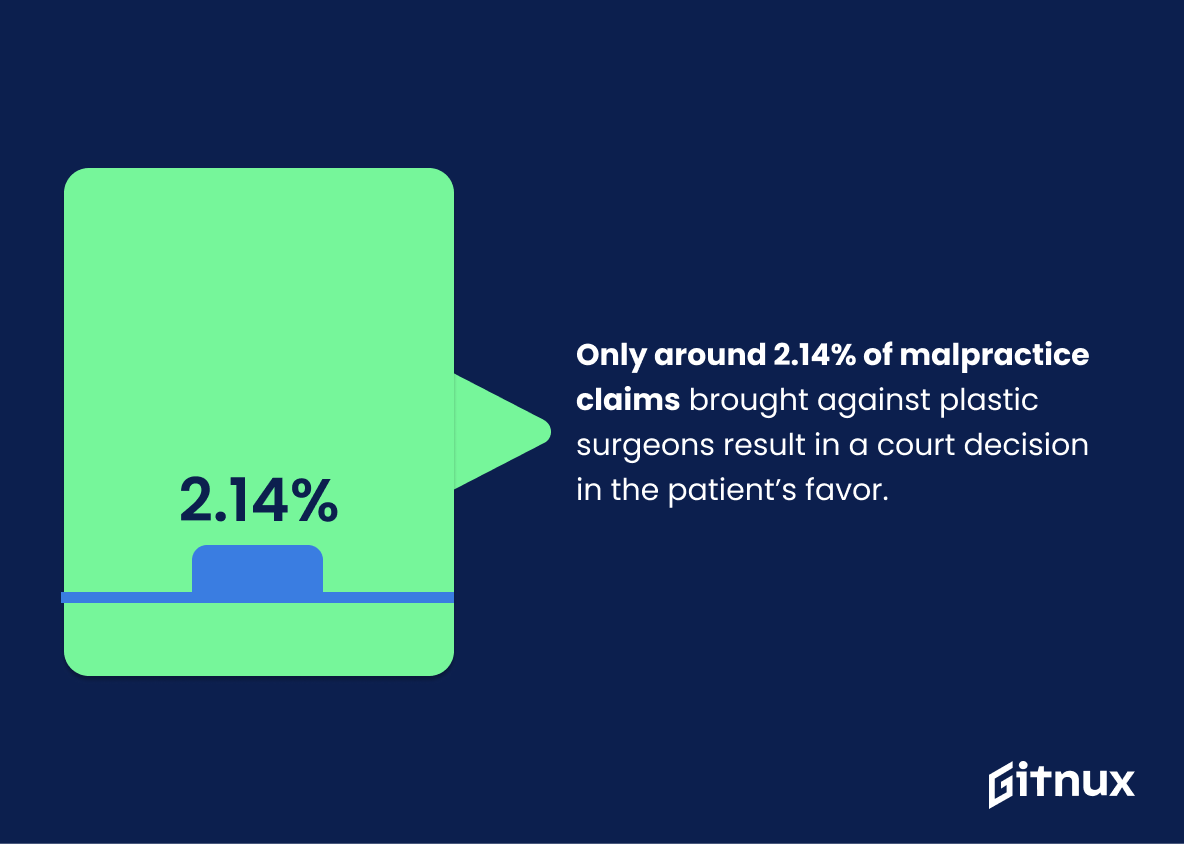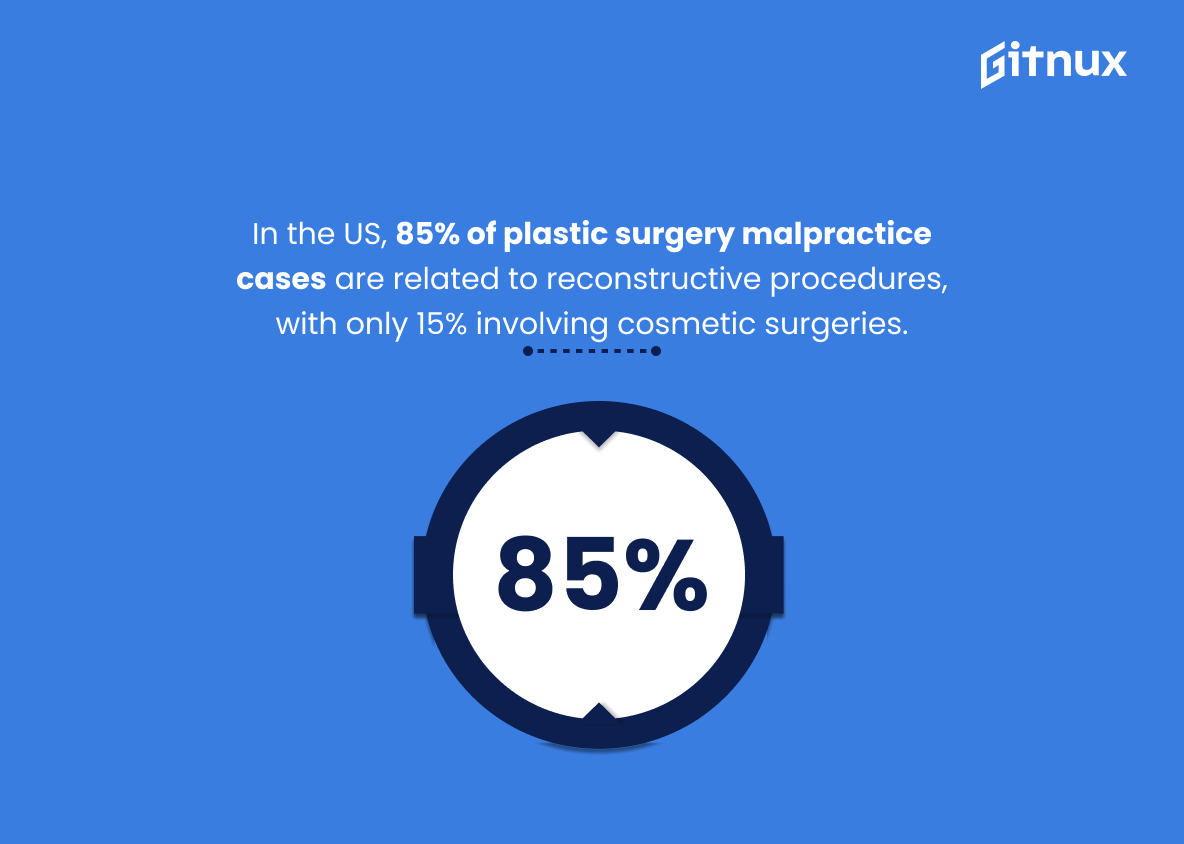Plastic surgery malpractice, which accounts for 7.1% of total U.S. malpractice claims, can have severe repercussions for patients. Common allegations include inadequate informed consent and wrong-site surgeries. Around 62% of these cases result in indemnity payments, averaging $250,000. The majority, 63%, stem from surgical errors.
About 90% of cases end in settlements, with only 22% leading to a finding of negligence against the surgeon. Breast augmentation is the most frequent source of these malpractice suits. Despite a rise in cosmetic procedures and related lawsuits, U.S. rates remain relatively low globally. In court, only 14% of cases favor the patient, suggesting most surgeons take necessary precautions.
Plastic Surgery Malpractice Statistics Overview
The total number of plastic surgery malpractice claims decreased by 36% from 2000 to 2010.
This statistic is a testament to the progress made in the field of plastic surgery, as it indicates that malpractice claims have significantly decreased over the past decade. This is a positive sign that plastic surgeons are taking the necessary steps to ensure the safety of their patients and the quality of their services.
The most common cause for plastic surgery malpractice claims is surgical error (63%).
This statistic is a stark reminder of the potential risks associated with plastic surgery. It highlights the importance of researching a surgeon’s qualifications and experience before undergoing a procedure, as well as the need for patients to be aware of the potential for surgical errors. It also serves as a warning to surgeons to take extra care when performing plastic surgery, as even the most experienced professionals can make mistakes.
In the U.S, approximately 22% of malpractice claims result in the plastic surgeon being found negligent.
This statistic is a crucial indicator of the prevalence of plastic surgery malpractice in the United States. It highlights the fact that a significant portion of malpractice claims are being upheld, suggesting that plastic surgery malpractice is a serious issue that needs to be addressed.
Breast augmentation procedures are the most common source of plastic surgery malpractice claims.
This statistic is a stark reminder of the potential risks associated with plastic surgery procedures. It highlights the importance of researching a surgeon’s credentials and experience before undergoing any type of plastic surgery, as well as the need for patients to be aware of the potential for malpractice claims.
The number of cosmetic procedures performed in the United States increased by 131% from 2000 to 2020.
This statistic is a telling indication of the growing popularity of cosmetic procedures in the United States. It highlights the need for greater awareness of the potential risks associated with plastic surgery, and the importance of ensuring that practitioners are held to the highest standards of safety and care. As the number of cosmetic procedures continues to rise, so too does the potential for malpractice, making it all the more important to stay informed about the latest plastic surgery malpractice statistics.
There has been a 356% increase in malpractice suits involving surgical mishaps in cosmetic surgery between 2010 and 2020.
This statistic is a stark reminder of the potential risks associated with cosmetic surgery. It highlights the importance of researching a surgeon’s credentials and experience before undergoing any procedure. It also serves as a warning to surgeons to take extra care when performing cosmetic surgeries, as the consequences of a mistake can be severe.
18% of plastic surgery malpractice claims involve patients who were harmed more than once during the same procedure.
This statistic is a stark reminder of the potential risks associated with plastic surgery procedures. It highlights the fact that even when a patient is under the care of a qualified professional, there is still a chance that they could be harmed multiple times during the same procedure. This statistic serves as a warning to potential patients to be aware of the risks and to take the necessary precautions to ensure their safety.
Approximately 17% of plastic surgery malpractice claims involve an allegation of not meeting the standard of care.
This statistic is a stark reminder of the importance of upholding the standard of care when it comes to plastic surgery. It highlights the potential consequences of not meeting the standard of care, and serves as a warning to those considering plastic surgery to ensure they are receiving the highest quality of care.
Only around 2.14% of malpractice claims brought against plastic surgeons result in a court decision in the patient’s favor.
This statistic is a powerful indicator of the prevalence of plastic surgery malpractice. It demonstrates that, despite the relatively low number of claims brought against plastic surgeons, the majority of those claims are not successful in court. This highlights the difficulty of proving malpractice in a court of law, and serves as a warning to potential patients to be aware of the risks associated with plastic surgery.
The majority of plastic surgery malpractice cases in the United States involve reconstructive procedures (85%, compared to 15% for cosmetic cases).
This statistic is a telling indication of the importance of reconstructive procedures in plastic surgery malpractice cases. It highlights the fact that the majority of malpractice cases involve reconstructive procedures, which are typically performed to correct physical deformities or to restore a body part to its normal function. This statistic is especially relevant in a blog post about plastic surgery malpractice statistics, as it provides a clear picture of the types of procedures that are most likely to lead to malpractice claims.
Conclusion
The statistics presented in this blog post underscore the gravity of plastic surgery malpractice. In the United States, plastic surgery-related malpractice claims constitute 7.1% of all malpractice claims, with approximately 62% of these cases resulting in indemnity payments. The most common allegation in such claims is inadequate informed consent, comprising 30% of cases, followed by surgical errors at 63%, and wrong-site surgeries at 25%.
The average indemnity payment for a plastic surgery malpractice case is about $250,000, and 90% of all cases conclude with settlements rather than going to trial. Breast augmentation procedures are the most common source of these lawsuits. However, reconstructive procedures account for a substantial 85%, compared to 15% for cosmetic cases.
Alarmingly, up to 36% of these cases involve non-certified surgeons. A scant 2.14% lead to court decisions favoring patients. There has been a marked increase in both the number of cosmetic procedures and suits involving them between 2000 and 2020 – with growth rates of 131% and 356% respectively.
References
0. – https://www.link.springer.com
1. – https://www.pubmed.ncbi.nlm.nih.gov
2. – https://www.www.plasticsurgery.org
3. – https://www.www.diederichhealthcare.com
4. – https://www.www.ncbi.nlm.nih.gov
